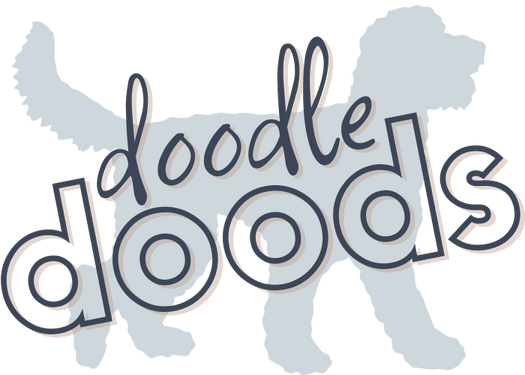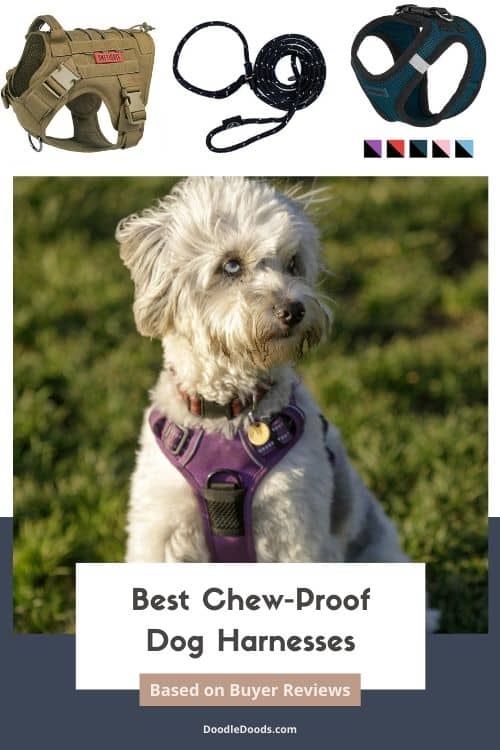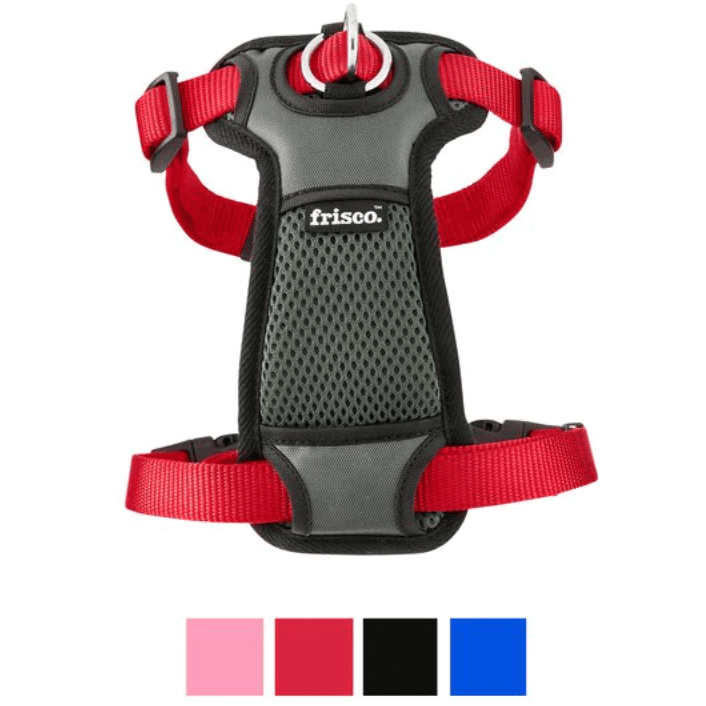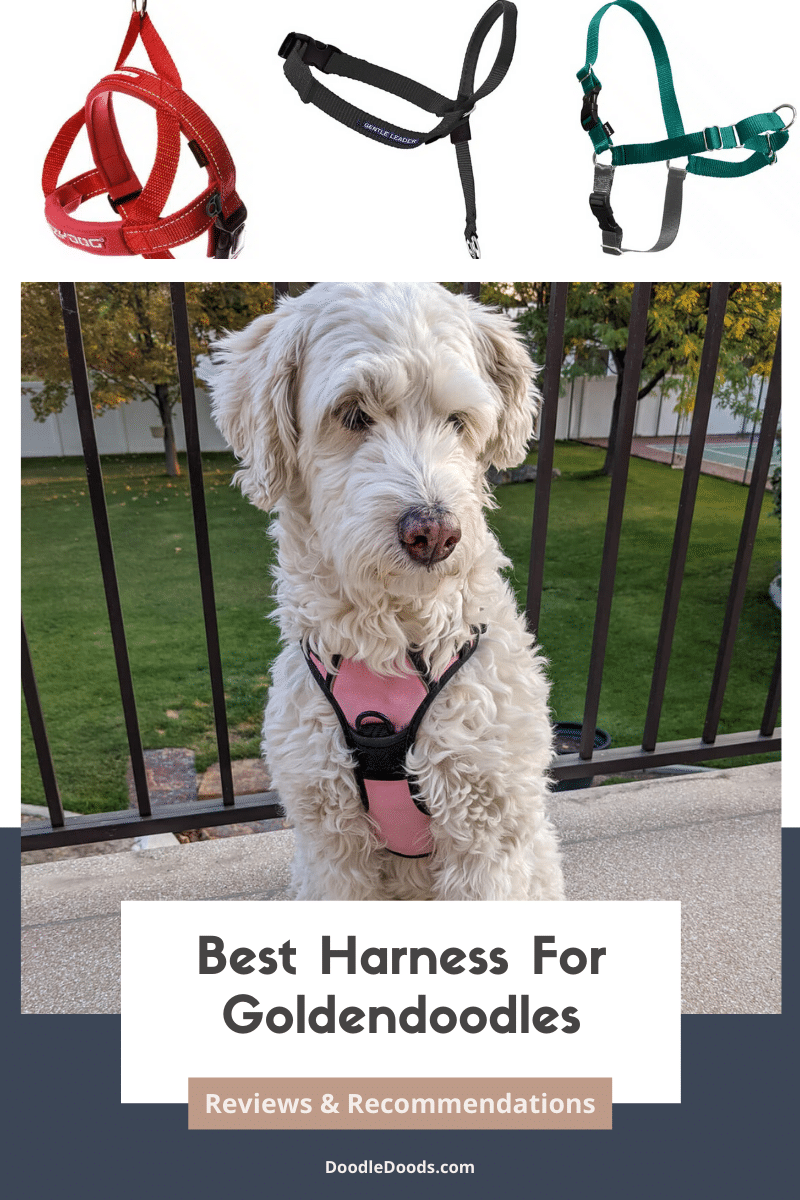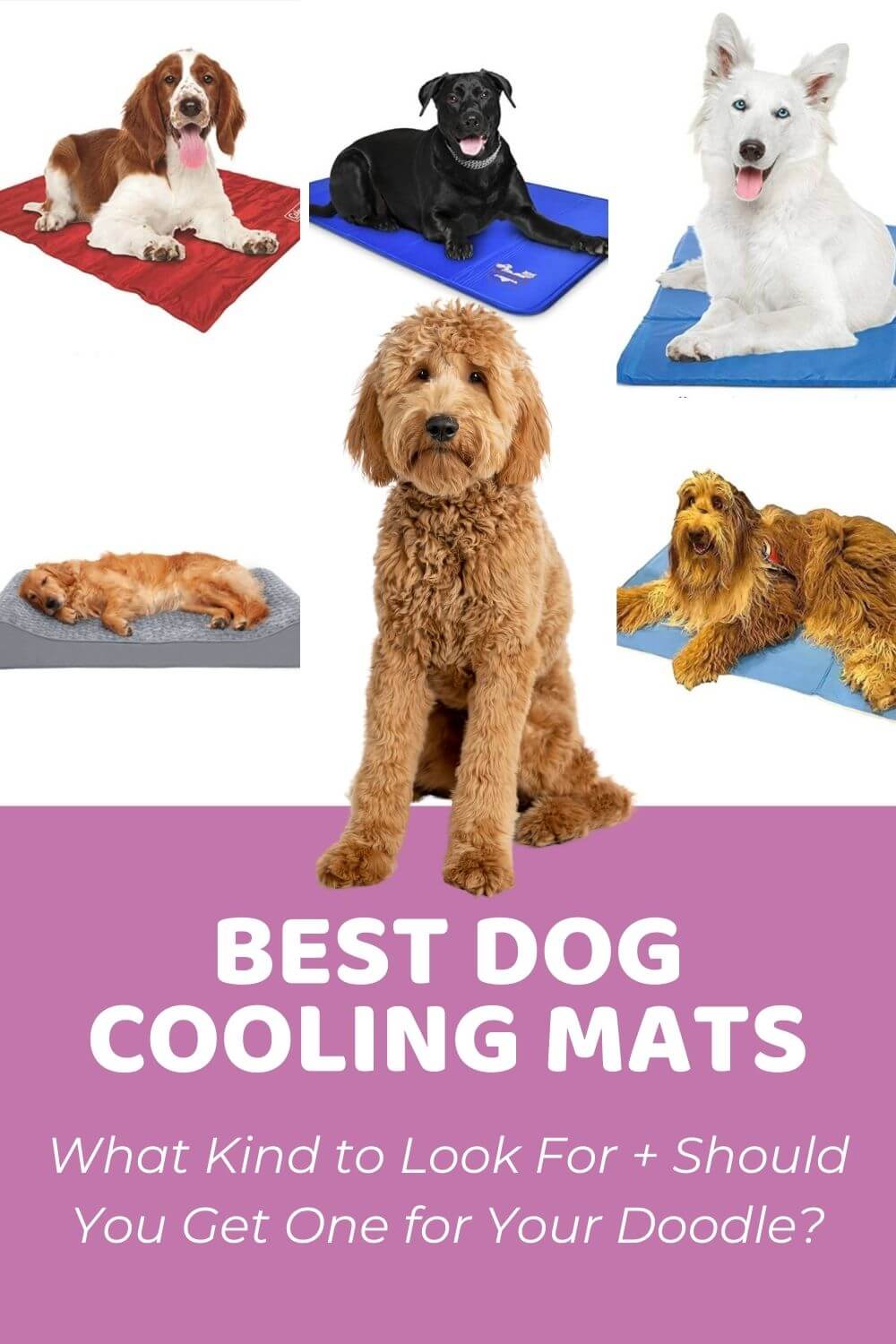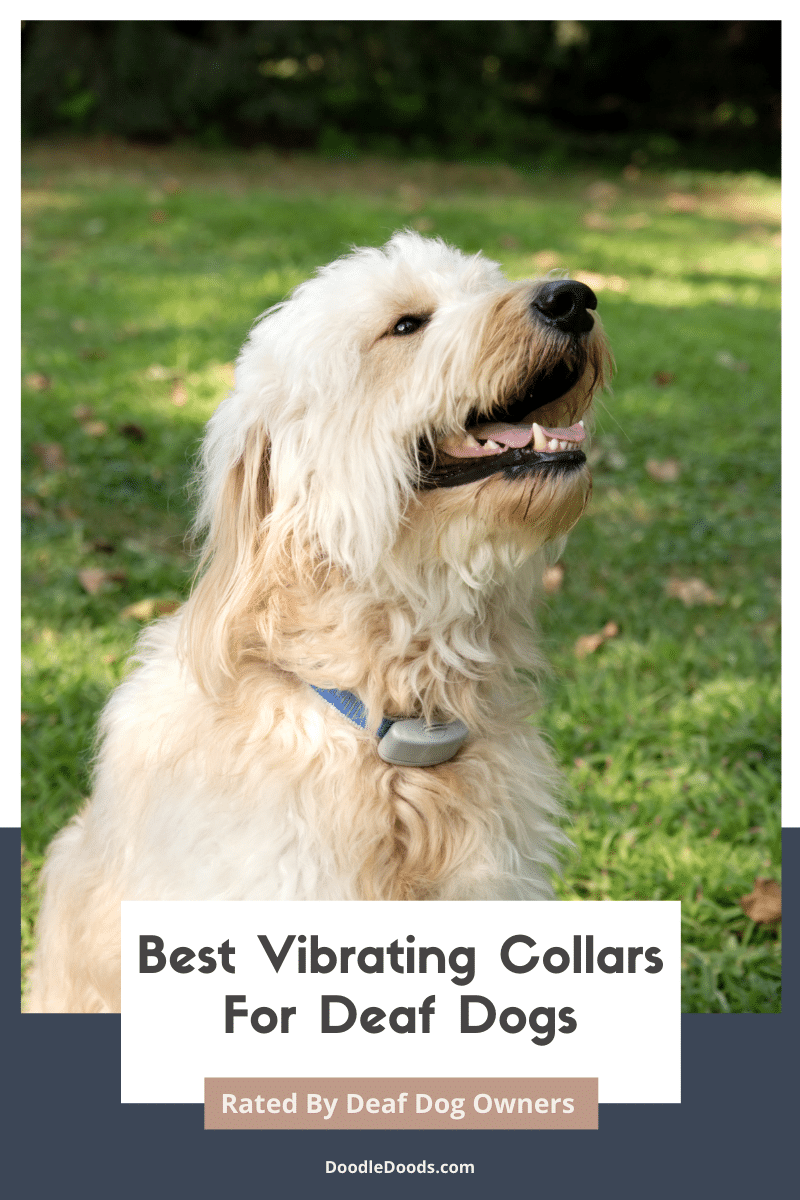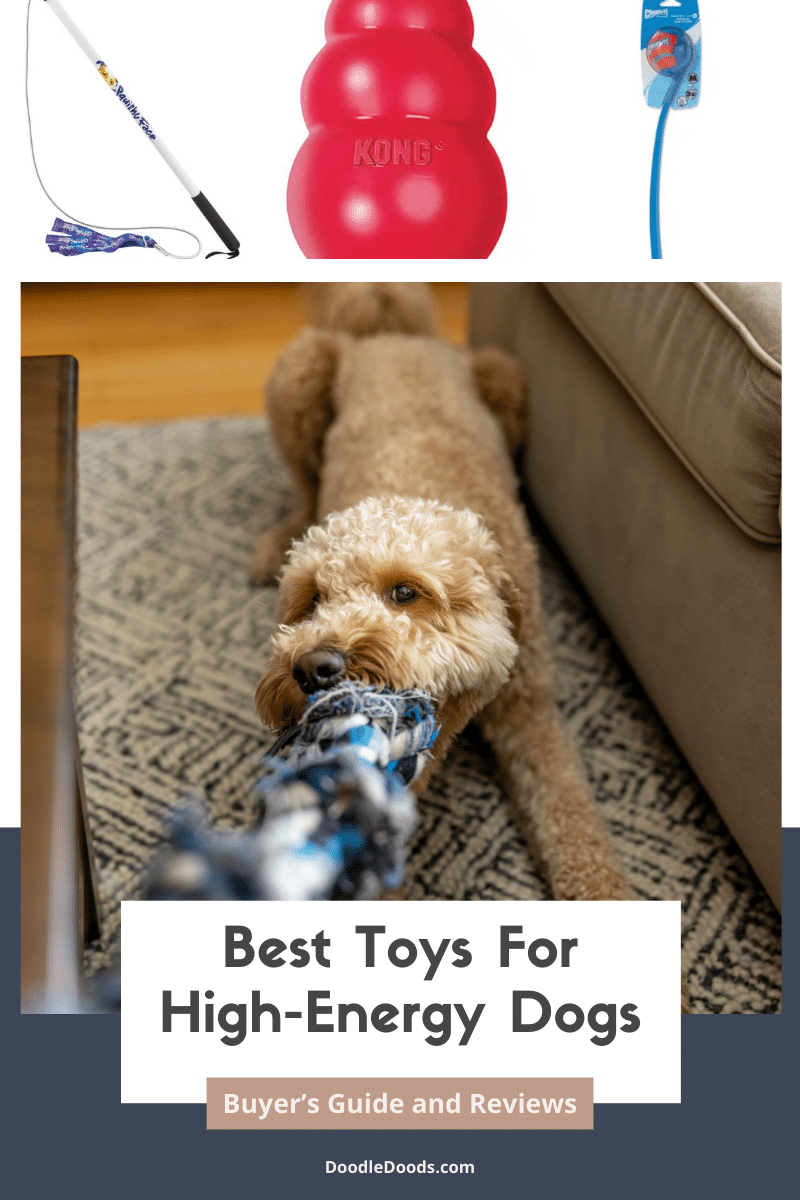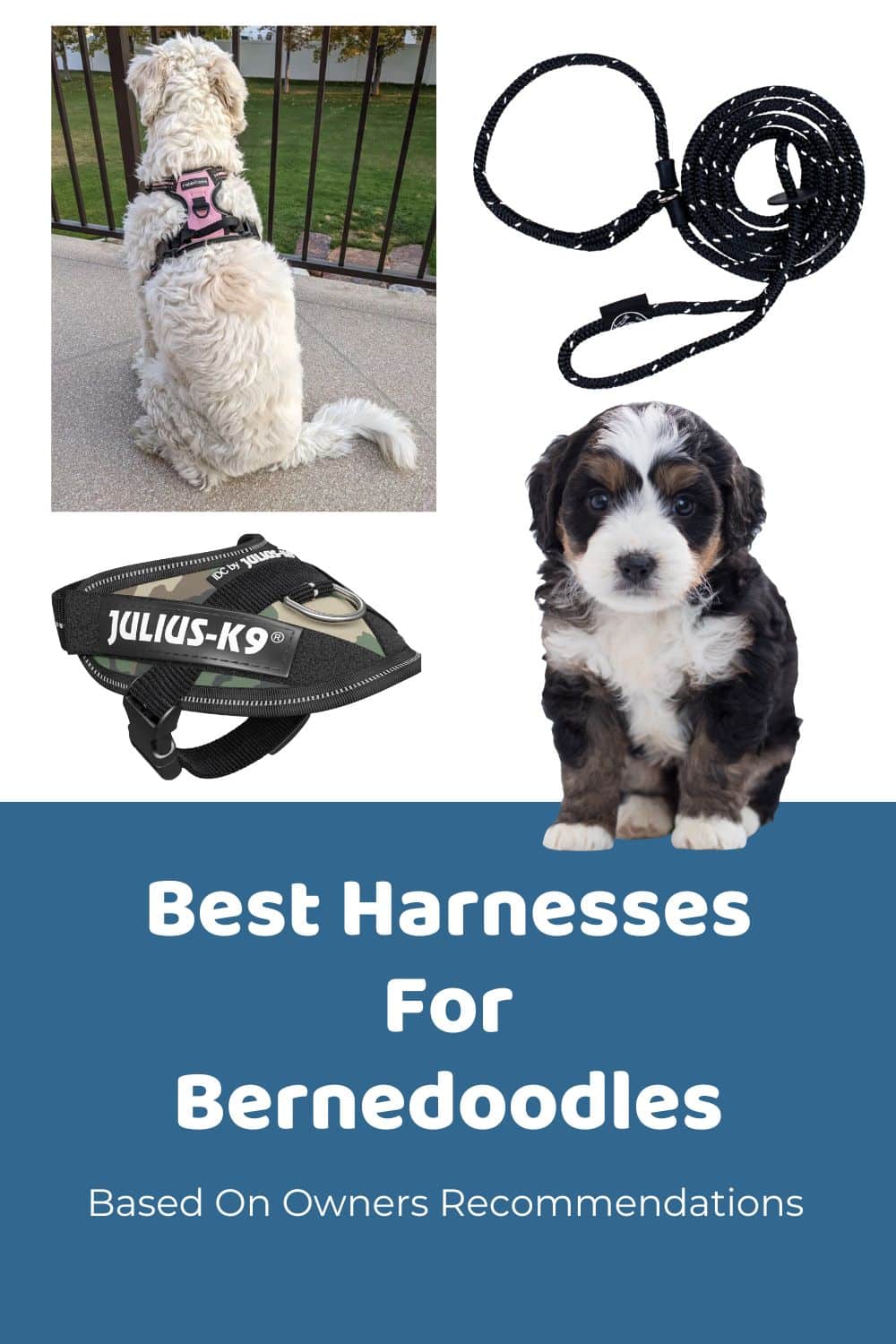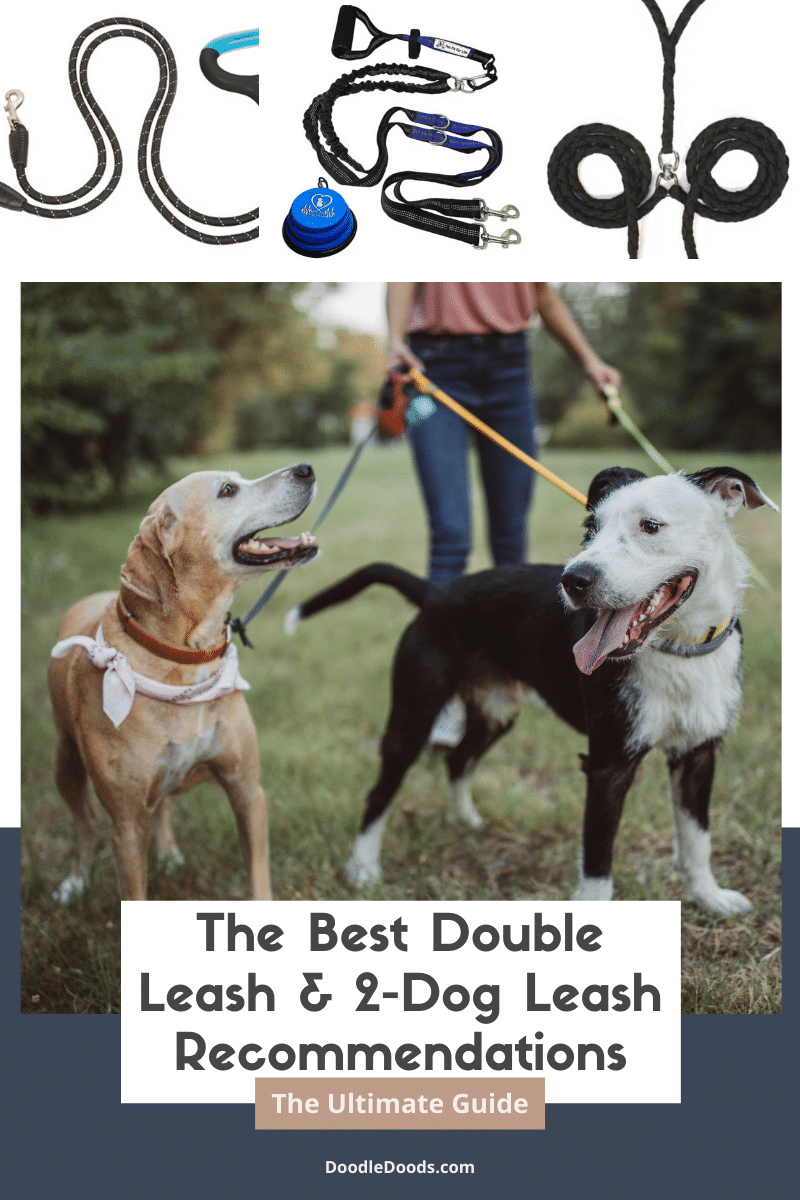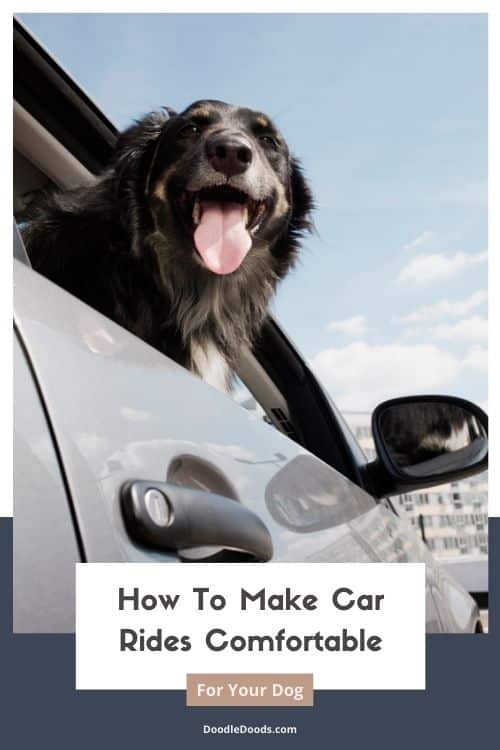While many dogs happily adjust to wearing a harness, even at an older age, inevitably, you have the few who don’t. Whether their method of protest is refusing to walk, fussing and pouting, or doing whatever they can to seek their teeth into any harness you try, you’ll likely be tearing your hair out for solutions on how to make one of these work for your pet. In the case of a chewer, this behavior gets old fast – be it because your pup doesn’t like the harness or because they are excited to be out. Either way, you’ll be replacing them far more than you’d like. Harness chewing is also risky because of the possibility of your pup getting loose in a high-traffic area. For the sake of your dog’s safety and as a way to keep your money in the bank, you might consider investing in a chew proof dog harness. In this article we lay out our top recommendations.
Table of Contents
- Our Top 5 Chew-Proof Dog Harnesses
- Collar Vs. Harness: When To Opt For The Latter
- Why Dogs Like To Chew Their Harness
- Chew Proof Dog Harness: Buyer’s Guide
- Chew Proof Harnesses: Reviews
- 3 Top Tips To Prevent Your Dog From Chewing Their Harness
- Chew Proof Harnesses: Frequently Asked Questions
Our Top 5 Chew-Proof Dog Harnesses
Our Top 5 Chew-Proof Dog Harnesses
Jump right to the good stuff with our selection of the best chew-proof harnesses currently available. However, if you’d like to see a little more on the specs, as well as what other buyers have to say, take a look at our more detailed reviews a little further below.
-
Pick #1:
OneTigris Tactical Vest Nylon Front Clip Dog Harness:
A smart and serious hiking harness, OneTigris’s Tactical Vest is designed to be tough and rugged and carry everything your canine needs while they’re out enjoying the trail. -
Pick #2:
Best Pet Supplies Voyager Black Trim Mesh Dog Harness:
Soft-looking yet sturdy, Best Pet Supplies’s Black Trim Mesh Harness is like a fun little jacket for your hound with a fit so good they will feel happy to wear it all day long. -
Pick #3:
Harness Lead Polyester No Pull Dog Harness:
If plastic buckles are your nemesis and your pup’s favorite chew toy, look no further than Harness Lead’s simplistic design harness that looks like a rope but is so much more. -
Pick #4:
Julius-K9 IDC Powerharness Nylon Reflective No Pull Dog Harness:
One of our all-time favorite pics – especially for Doods that are a little on the larger side, Julius-K9’s offering boasts an array of excellent features and functions for safer walking. -
Pick #5:
Frisco Padded Nylon No Pull Dog Harness:
For those four-legged fusspots who freak out at the mere sight of other harnesses, Frisco’s Nylon No Pull kind is very gentle, light, and comfortable yet surprisingly durable.
Collar Vs. Harness: When To Opt For The Latter
Traditionally, the dog harness was strictly the domain of working animals. However, they are becoming increasingly popular with regular old pet parents. While the simple collar works well for many, given that it’s super easy to use, comfortable for your pooch to wear, and has a space for ID tags, harnesses may be the way forward for slightly more troublesome pups. Especially for those just learning to walk on a leash.
Harnesses do indeed take a bit more effort in some respects – putting them on can be tricky if you’re not used to it. However, the fact that they have multiple straps that fit around your pal’s legs and chest makes them a much more secure choice for those tricky pups that like to slip their collars for fun and games. Beyond that, this assortment of straps creates a larger surface area for pressure applied by Doods who just love to pull.
The benefit of this is double fold: firstly, it allows for much more control and maneuverability of an overly-boisterous hound – especially with a front-style leash clip. Secondly, there is less injury risk than if your dog was just wearing a collar. The pressure is taken on the more robust chest area, not the delicate throat that could easily get bruised and damaged.
Why Dogs Like To Chew Their Harness
So, for whatever reason, you may have opted for a harness only to find, much to your dismay, that your pet isn’t quite as big a fan of it as you are. On the contrary, you may find they love it a little too much. Either way, the consequences will be much the same – chew, chew, CHEW! Why do they do this? Well, you likely know by now that this is simply the canine way. Most dogs just love to chew – anything they can get their paws on.
The harness is likely doubly tempting to your pup – it has all those fascinating dangling bits, and it feels super good against their teeth. Plus, your pooch is encountering their harness at one of the most exciting times of the day for them – walkies! This is always guaranteed to ramp any excitable behavior up to the stratosphere. As well as that, your dog will always be super eager to get going, and the harness is holding them back.
So, it seems impossible… but is there actually anything you can do to dissuade this behavior? Well, it may be the case that your four-legged friend simply grows out of it as they get accustomed to their harness and walks too. Yet this is not something you can necessarily count on. It might be something you need to train them out of. In the meantime, it pays to pick out a harness that won’t fall apart in the process.
Chew Proof Dog Harness: Buyer’s Guide
While often not marketed as such, many harnesses are designed to withstand some degree of exposure to chomping jaws. Here we have picked out some top choices based on the specs and what buyers have had to say about them. Then again, it’s always good to know yourself what to be on the lookout for when picking a top-quality product. Here are our suggestions:
Strong Materials
While nothing is entirely chew-proof, some materials are more robust than others. These are the ones most reliable dog manufacturers opt for when creating their harnesses. Be on the lookout for key terms in the description like “durable,” “sturdy,” “tough,” and “long-lasting,” and you’ll be onto a good thing. Just be sure when you receive your product to check for loose stitches in the seams and other weak spots to be sure you’re getting value for money.
Durability
With most harnesses, the pain points tend to be the fastenings. While some companies prefer metal as being far more robust than plastic, there are still a good many that choose the slightly more practical (in most other respects) plastic buckles. These can be fine as long as they can withstand pressure (particularly if your pup’s a puller) and they are placed somewhere your dog can’t get at them so easily.
Most harnesses do tend to have a metal leash attachment, though, to make this area more secure. Some even go so far as to include two and situate them on either side of the harness, meaning the leash also holds it together if one of the plastic buckles gives. This is the best choice if your dog is larger, stronger, more energetic, or simply just a bit more of a slippery customer when it comes to staying in their harness.
Out-Of-Reach Straps
It goes without saying that the best way to reduce chewing is to keep whatever it is that you don’t want reduced to nothing out of harm’s way. Quality harnesses will be very fitted with straps primarily around the chest area. This makes it more difficult for your anxious hound to get at. Consider also, for much the same reason, opting for a harness that has the lead attachment at the back rather than hanging in your pup’s eyeline at the front.
Ease Of Use
It goes without saying that you aren’t going to want to work too hard to get your pal in and out of their harness. This will likely especially be the case when they are hopping around all frantic to be gone on their walk already! If this describes your Dood to a T, you’ll probably be better off with a harness that you can simply slip over their head, fasten a single buckle and be on your way.
That being said, not all dogs are huge fans of having things placed over their heads. This design could end up making more work for you than necessary. If you find your Fido cringing away from these traditional-designed harnesses, opt for the one you place on the floor and get them to step into. Happily, these aren’t usually too much more work with just a single clip on the back.
Price
Obviously, the cost of the harness is a vital factor in choosing the right one for you and your furry friend. You’re not going to want to be digging too deeply into your pockets, particularly if the whole “chew-proofness” of the harness turns out to be a myth and it lasts less time under the jaw than your pal’s last pig’s ear treat.
Luckily, with the amount of competition on the market these days, you can easily get your hands on a well-made product at a pretty competitive price. Don’t, however, be afraid to spend a little more if the reviews are good and you feel the harness is worth it. Remember that replacing items over and over always works out more expensive in the end.
Size
One of the trickier things about buying a harness, compared to a collar, is making sure you get the sizing right. You’ll need to factor different measurements into the equation, such as chest depth. Most good manufacturers will provide a nicely detailed sizing guide allowing you to size your pooch up perfectly for their new harness. However, pay close attention to what the buyers say, as these aren’t always without issue. If you get this wrong, the harness won’t sit comfortably, giving your pup another motivation to chew.
Maintenance
A good harness is one you don’t need to worry too much about. That being said, if your dog’s into adventures (read: mud and other yucky substances), it’s very likely that you will need to clean their harness semi-regularly. It helps to have one that is simple to wipe down or even that can be flung into the washing machine if the situation is truly dire. Just take care that cleaning won’t impact the integrity of the fabric. This is a good question to ask before buying!
Chew Proof Harnesses: Reviews
Best For Extreme Exercisers: OneTigris Tactical Vest Nylon Front Clip Dog Harness
Available in black, coyote brown, and ranger green for the adventure-loving canine in your life, the OneTigris Tactical Vest is perfect for the great outdoors. Available in medium and large, it features heavy-duty nylon water-resistant shell and sturdy, fully adjustable fasteners, including an extra-strong V-ring leash attachment. To ensure a comfortable as well as functional fit, the inside of the harness is soft and padded. You can be sure there will be no painful rubbing, even during the most grueling of hiking expeditions.
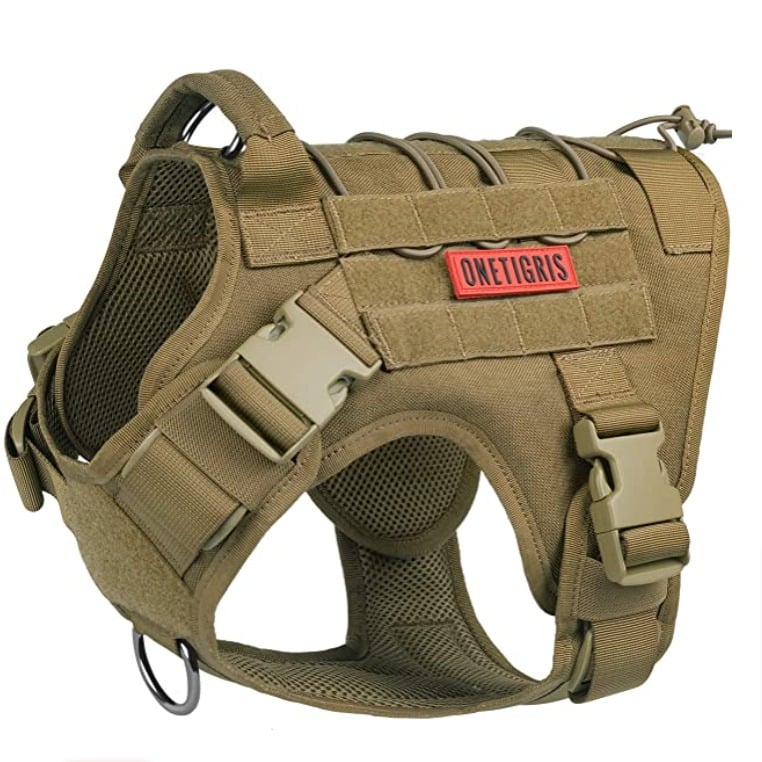
What’s great about this harness in terms of chewing is the snug fit. It leaves nothing dangling about in your pet’s line of sight. Once on, they would struggle to get a good grip on it without a fair bit of contortion. If they do manage to get ahold of it while you’re getting them set up for the walk, the material is tough enough to withstand some energetic tooth action. As the reviewers say, this is a quality product that, with a little care and attention, will last.
Pros
An easy-to-use, well-made harness that does all you need it to and more besides. Reviewers particularly like the MOLLE webbing for carrying supplies.
Cons
According to the reviews, the harnesses run a little large, so it might be worth going a size down.
Best For More Miniature Mutts: Best Pet Supplies Voyager Black Trim Mesh Dog Harness
Another excellently snug harness that fits like a second skin is the Best Pet Supplies Mesh version. This one comes in a wider assortment of colors, so you can easily find one to match your pet’s personality. The lightweight mesh fabric is surprisingly strong, as well as being nicely breathable for a more comfortable experience for your hound. The fastener strap with its snap-in buckle for extra security is situated firmly out of reach of wondering mouths, and the two solid D rings give you double the leashing hold.
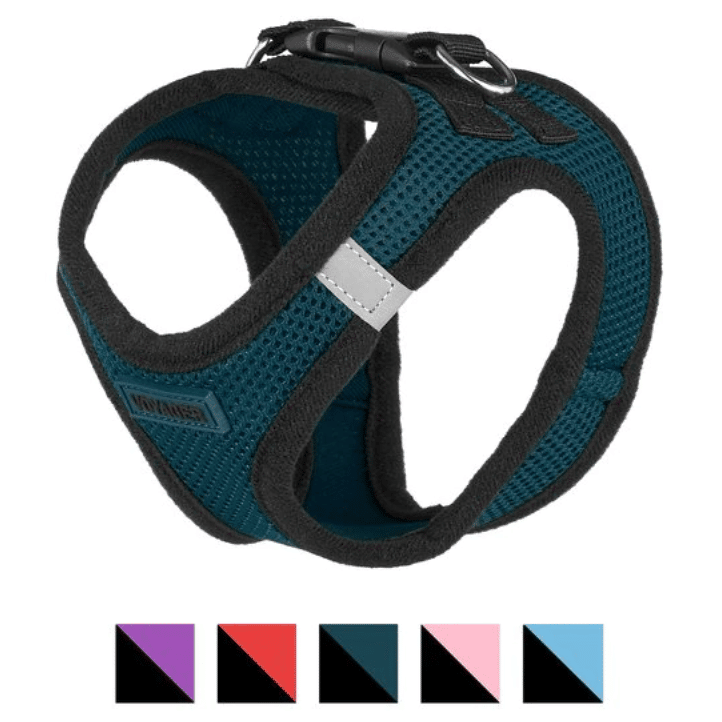
Again, this harness is well-fitting, with no little dangly bits left hanging around in the way of eager teeth. It’s also designed to be gentle against the skin, with the airflow-enhancing fabric keeping things cool and chafe-free. A bonus of this harness is that it’s step-in, which is great for dogs that hate having things pushed over their heads. While we like it for smaller dogs, as the design distributes pressure over a very large service, owners of pups of all sizes seem pretty pleased with this fab product.
Pros
As well as being eye-catching and nicely designed, this harness likely feels every bit as comfortable on as it looks.
Cons
The harness is sturdy, and the fit keeps it from harm’s way while worn; you’ll want to be sure to keep it away from super sharp teeth at other times.
Best For Problem Pullers: Harness Lead Polyester No Pull Dog Harness
If your dog is eager to be off and often bites on the harness to gain a little more freedom, then this will likely be the pick for you. Harness Lead’s super simple offering may look just that – super simple, but therein lies the beauty of this exceptional find. You certainly don’t need to worry about the strength of the thing. The double-braided nylon has a tensile strength of up to 3,700 lbs, which makes it strong enough to hold a boat. You can be sure that chewing won’t be too much of an issue for this harness to endure.
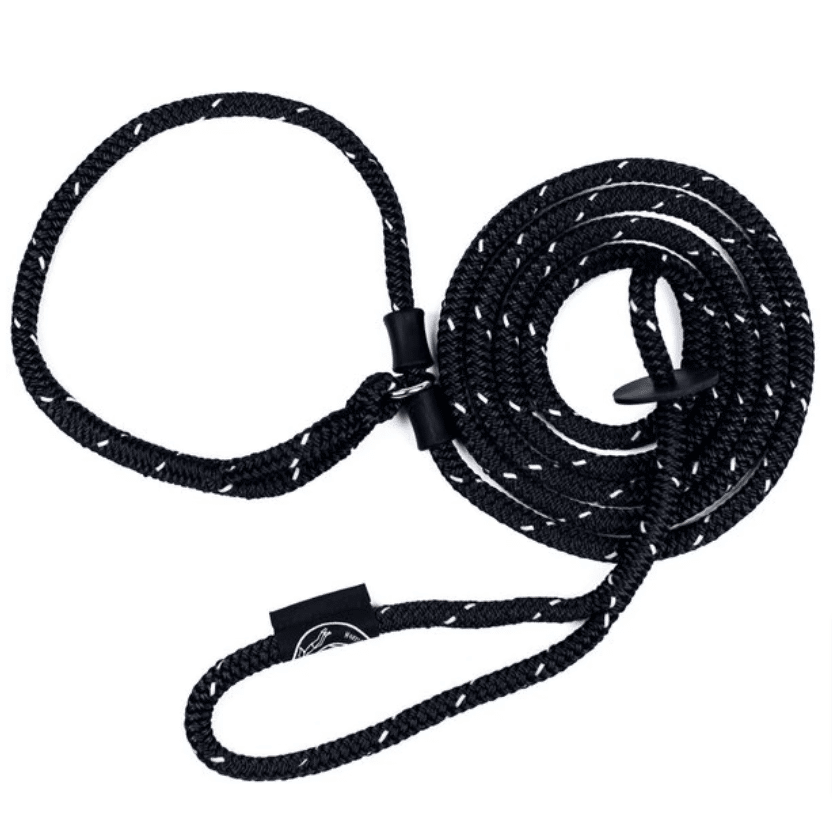
This harness is great for pulling dogs and chewers alike, and it even makes it extra challenging for Houdini hounds to find their way out of. So good news on all fronts, especially for those dealing with more boisterous puppies and adolescent Doods. Many reviewers consider this the most secure harness they’ve ever used. Even those with incredibly strong working dogs who usually like to take their owners on a drag rather than a walk are impressed with what this lead can do. Plus no plastic buckles to worry about!
Pros
Basic, inexpensive, and yet incredibly effective, an extremely durable leash that can endure a fair bit of wear and tear.
Cons
There really aren’t that many negative reviews for this one. Some struggled with putting it on, while others found it difficult to hold.
Best For Energetic Explorers: Julius-K9 IDC Powerharness Nylon Reflective No Pull Dog Harness
A powerhouse of harnesses, Julius-K9’s “Powerharness” is a firm favorite of dog trainers everywhere for good reason. With its water-repellent outer shell and sturdy construction, it can stand up to almost any adventure you and your hound are planning. Plus, the harness’s weather-proof buckles work even when frozen – good news for all you winter hiking fans! It even features a broad reflective chest strap and glow-in-the-dark, removable side labels so you can keep good track of your pet even as the nights draw in.
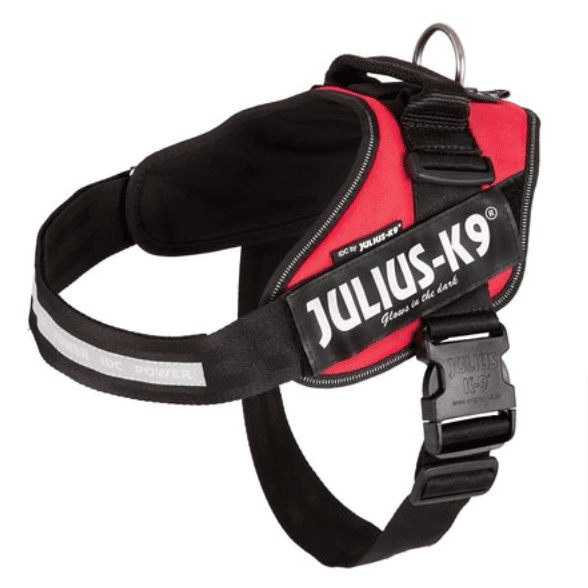
Compared to some other harnesses, there is nothing overly fussy about this one. Its simple design with the soft, breathable eco-tex inner liner makes it comfortable to wear while allowing for absolute freedom of movement. After all, this high-quality harness is designed for working dogs yet comes in an assortment of sizes, so it works for smaller Doods too. Many reviewers even go so far as to comment that, for them, this is the best of its kind on the market and well worth the money.
Pros
Durable materials and broad straps make this harness a worthy opponent of any chewer. Features like reflective/glow-in-the-dark strips are welcome too.
Cons
Seemingly not the best harness to reduce pulling without the front part attachment for the leash. If that’s important for you, you better give this one a miss.
Best For Younger Yowlers: Frisco Padded Nylon No Pull Dog Harness
Made with high-quality nylon webbing for durability and a padded mesh chest piece, Fresco’s harness is designed to be both practical and comfortable. Each of these will hopefully ease your pooch’s desire to chew somewhat. However, the hard-to-reach strap placement and back fastening options will also go far in keeping it out of hungry little (or not so little) jaws. The harness, with its adjustable straps, is designed to fit your pet snuggly, allowing them almost to forget they are even wearing one in the first place.
As beginner harnesses go, this is a strong and pretty versatile choice. It’s simple yet durable and can be used to reduce pulling as well as chewing. The harness is simple to slip on over your pup’s head but feels nicely secure once in place and adjusted for the best fit. Beyond that, most dogs (and even young puppies) seem to deal with it pretty well. If you’re working on leash training, the front clip option gives you a little more control. Just be careful to keep that too-tempting hovering leash out of reach!
Pros
This harness is likely to be the easiest one for dogs used to just a collar to get used to with its basic yet ergonomic design.
Cons
This will likely not be the best harness for those strong pups you’re trying to hold back. It could rub them in the wrong places.
3 Top Tips To Prevent Your Dog From Chewing Their Harness
Eager jaws will find and all that… However, you’ll often find your pal is more inclined to have a go on their leash than their harness – it’s in easier reach, after all. If that’s the case, check out our dedicated article for techniques to prevent leash biting. Many of these will likely also be helpful if that chowing behavior is overlapping on to the harness. However, if it’s solely aimed at their harness, here’s what you might do about it:
1) Keep Temptation At Bay
The first and best way to keep a new harness in one piece is to keep it up and out of the way. Stash it in a cupboard until walk time, and never let your pooch near it until you’re putting it on them. In terms of keeping their teeth away from fabric while wearing the harness, make sure you opt for one that fits snuggly and is the right size for your Dood. Keep away from harnesses with extra bells and whistles that hang down and distract.
2) Check The Fit And Feel
The underlying issue of targeted harness biting is often that it doesn’t feel comfortable to your pooch. It might be a little tight, or there could be a part of the harness that rubs or feels itchy. The best thing to do is to pop the harness on your dog and then run your hands around the insides of the body and the various straps to check for areas of discomfort. From there, it might be a simple case of adjusting the fit.
3) Distract and Divert
If your pup is a more general problem chewer and you’re already working on this issue, a potential quick fix to keep their gnashes off their harness is to provide them with something else to sink their teeth into. If your mutt is a fan of balls or other toys, you might allow them to carry one of these along on the walk. With a mouthful of something they actually are allowed to chew on, the problem should reduce quite drastically.
Chew Proof Harnesses: Frequently Asked Questions
Vets tend to like harnesses that distribute pressure when your pup pulls across their chest and back rather than concentrating it across the throat as collars do. In this way, it’s far less likely that your pet will injure themselves when they get a tad excited at seeing their friends in the park or a squirrel on the loose up ahead.
Despite what the marketers might claim, there is absolutely no such thing as an indestructible harness. Given time and access, your super chomper will be able to plow their way through just about anything. However, most harnesses will hold up to a little light mouth action. Just be sure to keep them out of harm’s way the rest of the time.
Opting for a harness that fits snuggly to your pet’s chest is a good way of ensuring they can’t get at it to bite it. However, if your hound has the extraordinary bendability of a contortionist, you might try and distract their attention by offering them a favored toy to carry or keep them focused on you with a bit of light training and some high-value treats.
There is no single answer to the question of collar vs. harness. It all depends on how your dog walks. Younger, more exuberant pups often pull. For this reason, they are better suited to a harness. Harnesses give owners more control over their pets and ensure they no injury when they do pull. However, more docile walkers might do perfectly well with their leash attached to their collar.
Chewing is one of those irritating canine behaviors that’s pretty tough to do anything about. The reason? It’s self-rewarding. Most dogs love to chew and will do so whenever they can. It’s vital that you work on teaching your pup what to and what not to focus their jaw action on. In the meantime, you’ll want to ensure you’re not constantly replacing much-needed items like their walking harness by picking out a top-quality, durable product that can withstand a little mouthing here and there. Hopefully, this list has given you some ideas, and you’ll find something that works for you.
Learn How to Care for Your Doodle Puppy!
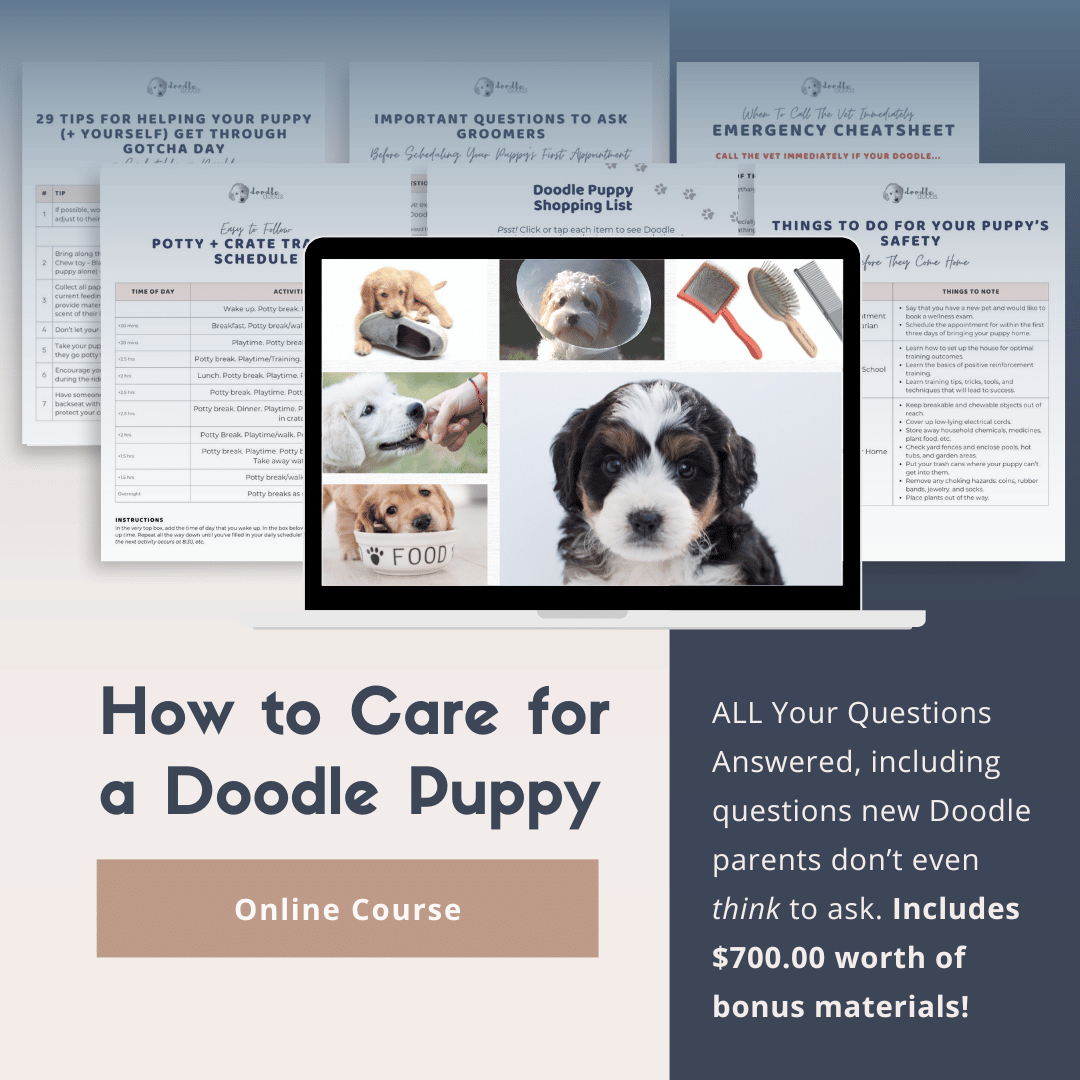
Perfect for first-time Doodle parents, get ALL your questions answered, including questions new Doodle parents don’t even think to ask.
Plus, get $700 worth of Bonus Materials for FREE, including:- Doodle Parenthood Community and Support Group ($190 value)
- Doodle Puppy Growth Tracker ($20 value)
- EMERGENCY Cheatsheet: When To Call The Vet Immediately ($50 value)
- HELP! Button ($145 value)
- And SO MUCH MORE!
